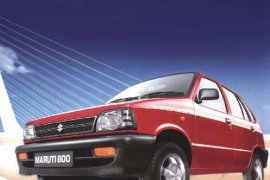MARUTI SUZUKI 800 Models/Series Timeline, Specifications & Photos
First production year: 2000
Engines: Gasoline
Body style: Hatchback
Due to specific laws, carmakers who wanted to sell vehicles in India had to produce them inside the country to avoid high import taxes.
In the early '80s, Suzuki found Maruti as a local partner for assembling vehicles. The first generation of the Maruti Suzuki 800 appeared in 1983, followed by a second generation in 1986. Maruti, on the other hand, noticed that with some effort could export the vehicle to other markets. So in 2000 it started the production of an enhanced version of the 800's second generation.
The car's design was the least concern of the Indian automaker, so the vehicle looked like a pile of bricks with rectangular headlights at the front and corner-mounted turn signals. In addition, Maruti added a set of signal repeaters on the front fenders. The flat surfaces were easy and cheap to build, and the metal sheets were produced in India and they were very thin, so the overall weight would be kept at a minimum. Despite the short length of the vehicle, it featured four doors and, on the sides, the 800 also sported a third window behind the rear doors. Finally, at the back, the car sported a flat, vertical tailgate.
Inside, Maruti installed thin, low-mounted seats for the front passengers and a folding bench for the rear ones. Technically, it was homologated for five occupants, but there was hardly room for four. As for the trunk, that was enough for a briefcase and a sandwich. The dashboard was squared, and the instrument cluster that fronted the driver sported just a few dials for the speedometer, fuel level, and water temperature.
Under the hood, Maruti used the license-built 800 cc engine provided by Suzuki. It was paired as standard to a five-speed manual.
